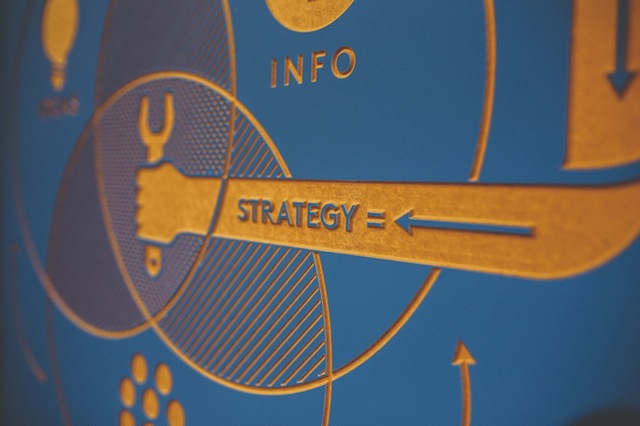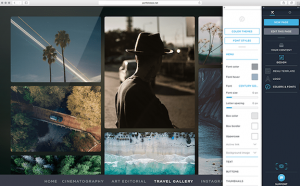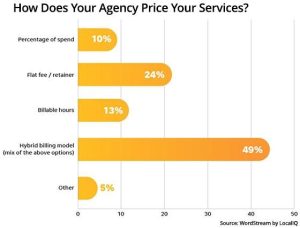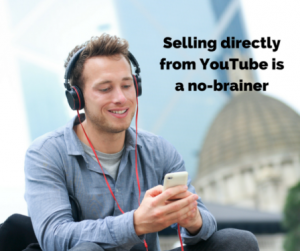
Today’s connected world and ever-present technology have changed the way we think about engaging with companies. Whether you’re a major corporation, or a bustling startup, people expect their interactions to be something that wows them. Simple ads are important, but they are just a piece of the puzzle.
In today’s world, companies need to create an experience and a memory. This is the crux of experiential marketing and it’s the focus that all companies should be taking, regardless of the business’ size or scope.
What is Brand Loyalty? A Quick Breakdown
The concept behind brand loyalty involves stimulating as many of the customer’s five senses as you can. Most importantly, it’s about creating an experience that sticks with them and associates positive emotions with your brand.
Traditional marketing involves things like ads and commercials that verbally and visually communicate to the customer. This is not enough. Companies need to take this a step further by bringing customers into the brand with experiential marketing through live events, engagement, promotions, and plenty of other tactics.
Doing these things allows the brand to create an emotional connection with the customer. This connection engenders loyalty and influences their purchasing decisions long into the future.
Here’s where it gets interesting.
You don’t need a giant budget and a crazy flash mob or huge event to achieve the benefits of loyalty. Something as simple as a well-written story or a livestream can create that experience on a lower budget. Technology allows us to connect with people anywhere and introduce them to our brands.
Remember that 90% of all purchasing decisions are made subconsciously. If you can create an experience, forge a memory, and build an emotional bond, then you have a much better chance of earning a customer’s loyalty and their purchases.
Implementing Engagement Marketing Today
There are numerous tools at our disposal for making customers a part of your brand. If you go out and look at large organizations, you’ll see how their events all have something in common:
Engagement.
When people refer to this type of marketing, they’ll often use the term experiential, but they’ll also call it engagement marketing. Your marketing campaigns, no matter how large or small, is dependent on how your customers engage with the brand. If you don’t have engagement, then the campaign won’t be a success. Likes, comments, and posts are all forms of engagement. But there is more to it. Engagement also seeks to open a two-way communication with your customers.
These types of interactions happen both online and offline, so budget isn’t really a factor. It’s all about how you create the all-important experience. Here are five ways you can do that at every level of your business:
1. Why Do Customers Connect to My Brand?
If you’re going to host an event, attend one, or host a livestream on your site, it must connect meaningfully to your brand. As you plan your campaign, continuously ask yourself “Why does this connect to my brand?”
A perfect example is the campaign that MOOLAGRAM did with their signature Moolamen. The app is meant to be a platform where people and businesses can connect. The company hired people to dress as brand ambassadors in red morph suits and introduce people at the festival to the brand.
The bright red suits matched the color of the app, and the ambassadors were sporting QR codes on their chests that allows customers to quickly and easily download and register for the app. The entire approach also lined up perfectly with the company’s culture as a modern and exciting business.
2. How Do I Harness Social and Digital Connections?
What if you can’t reach your customers in person? Does this leave your experiential marketing D.O.A? Not at all. Thanks to the insane growth of social media, the entire game has changed.
Smartphones and tablets are connected to platforms like Facebook and Twitter, where you can easily reach your customers and engage with them. You can even create experiences online with tools like Facebook Live that allow your customers to interact with your brand from anywhere.
The most important thing is to keep the experience focused on the customer. Let’s consider an example of this in action. When Tough Mudder held a live event for their customers, they also streamed the event live on Facebook.
By doing this, they allowed just under 50,000 people to engage with their brand, in addition to the ones attending the event. The host, Coach T. Mud also did an excellent job engaging both the people at the event and those watching online.
This allowed the company to reach countless more people without any strain on their current budget for the event. In the end, everyone involved left with a memorable experience.
3. What Can Insane Brainstorming and Preparation Do for Me?
Creativity isn’t something that can be taught. Instead, it must be a combination of inspiration and motivation. To this end, you should be in the trenches with your team. Brainstorm and create an energy that allows everyone to submit their own ideas.
Every idea, no matter how insane it might be, should be explored. These ideas should be born out of emotion, because they’re designed to create it in your customers. Once you have a potential idea, you should start preparing immediately.
Creating things like #hashtags for live events should be something you’re doing well before the event takes place, so you can promote it on your advertising channels.
4. Which Senses Should I Focus On?
It cannot be said enough. Customer engagement must go beyond simple visuals and engage other senses as well. No, you can’t appeal to someone’s taste or smell senses through a computer screen, but you can activate those parts of their brain.
Don’t discount the power of things like storytelling. Using the right descriptions and imagery can cause our sensory cortex to respond as if were there and experiencing it.
The main takeaway here is this:
Your customers don’t have to be present for you to stimulate their senses. A strong image, story, visual, or combination of all three can cause us to feel the same way we would if we were there.
5. How Do I Tame the Time and Money Beast?
A tough skill to master, is the ability to look at a concept and judge how manageable and reasonable it will be. You have to take things into account like your budget, the scope of the marketing campaign, and how you’ll keep it under control.
You start with an idea, but turning it into reality is another beast entirely. Start by breaking the idea down into its unique parts. Look at how each of those pieces will fit together in both your budget and in regards to the people on your team.
You want to go big and go all in, but you have to keep in mind the time and money it will take to bring this idea to fruition. Get excited about your ideas, but make sure you can translate them into manageable solutions.
How do you create a marketing campaign like this on a budget? Here are some tips:
- Focus on Creativity – Going big and renting out a massive space in a big city is bold, but it doesn’t always pay dividends. Instead, focus on making yourself stand out. You don’t need a giant budget to do something unique. Look at examples from other small businesses to see what’s been done and what hasn’t.
- Quality is King – It’s all about the experience here. Flashy options and big budgets can be undone with a bad experience just as quickly as a campaign that uses a smaller budget. Only include something if you can do it to the best possible level of quality.
- Plan Early and Thoroughly – Waiting until the last minute is an easy way to spend more than you expect in a rush to finish everything. It will eat into your budget. Instead, start planning early and look for promotions or sales from your vendors as you do research for the most cost-effective options. This will also save you more time.
- Promote Smarter – We all know that marketing only works if people see it, but you don’t have to spend tons of your budget on television or radio advertising. You can reach just as many people, or more, through digital channels. Social media advertising, for example, is incredibly inexpensive compared to other options.
Forging Bonds and Creating More Engaged Customers
Whether you call it experiential marketing, brand loyalty, engagement, or something else entirely, this is the future. There is a seemingly infinite amount of brands in today’s connected world. If you want to stand out, regardless of your size, you need to forge bonds and create experiences for your customers.
How do you create and manage brand loyalty? Let us know in the comments!
Business & Finance Articles on Business 2 Community(98)









